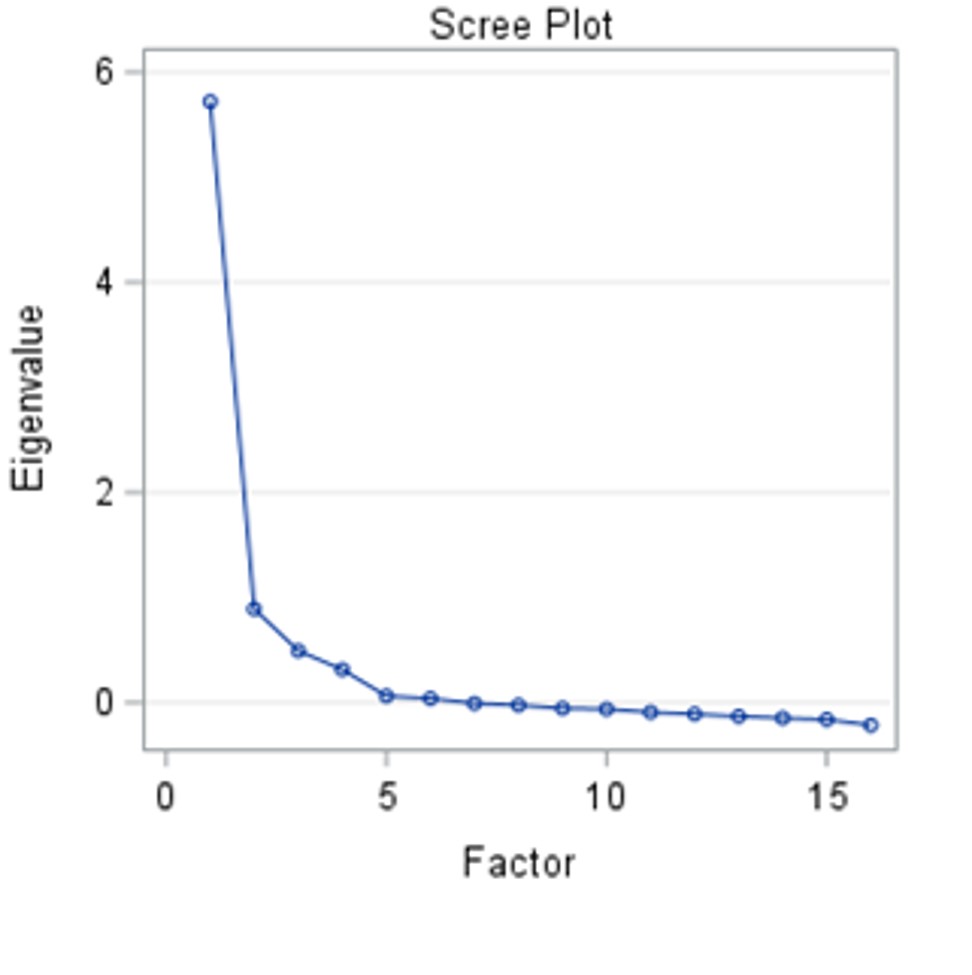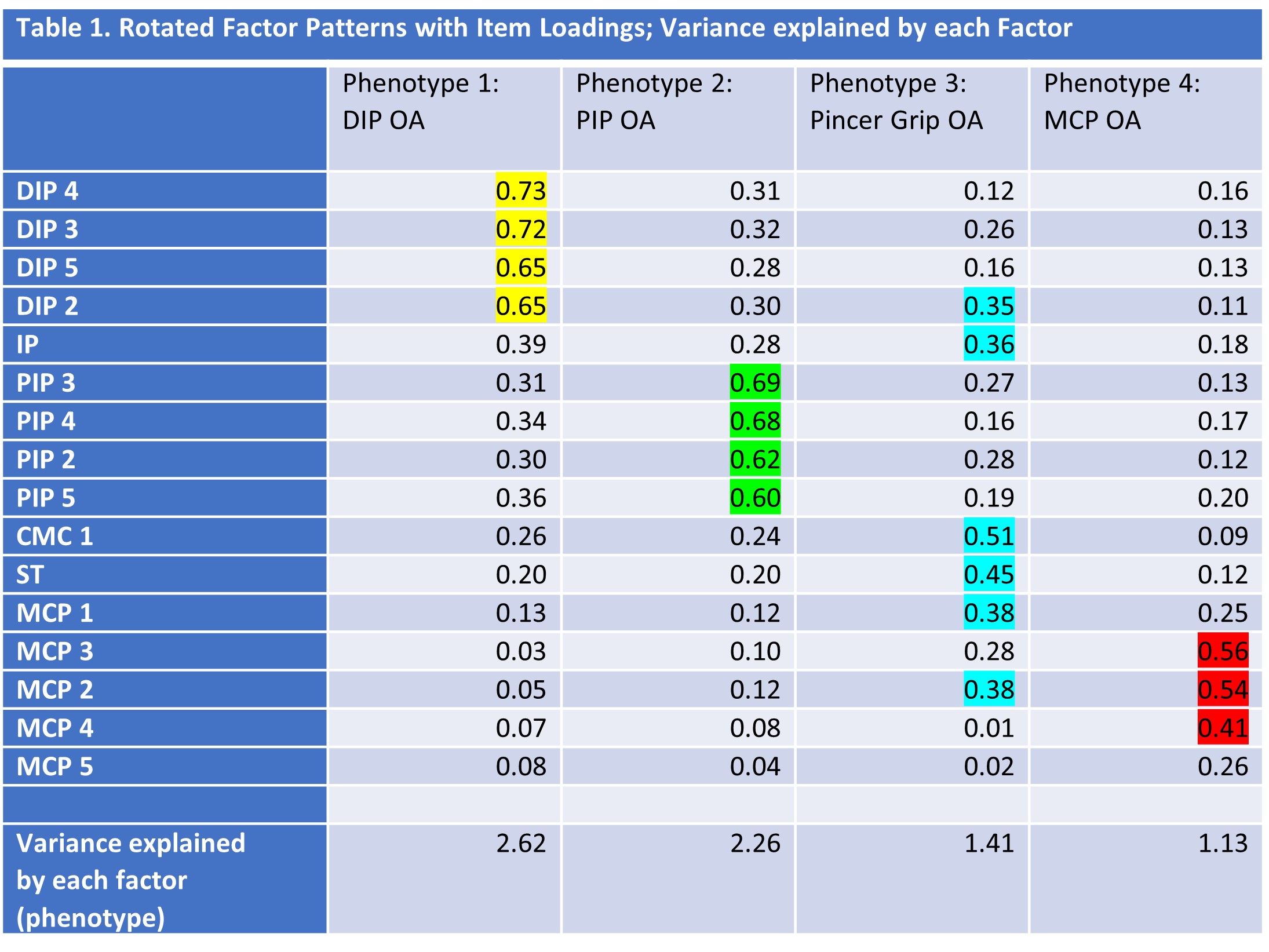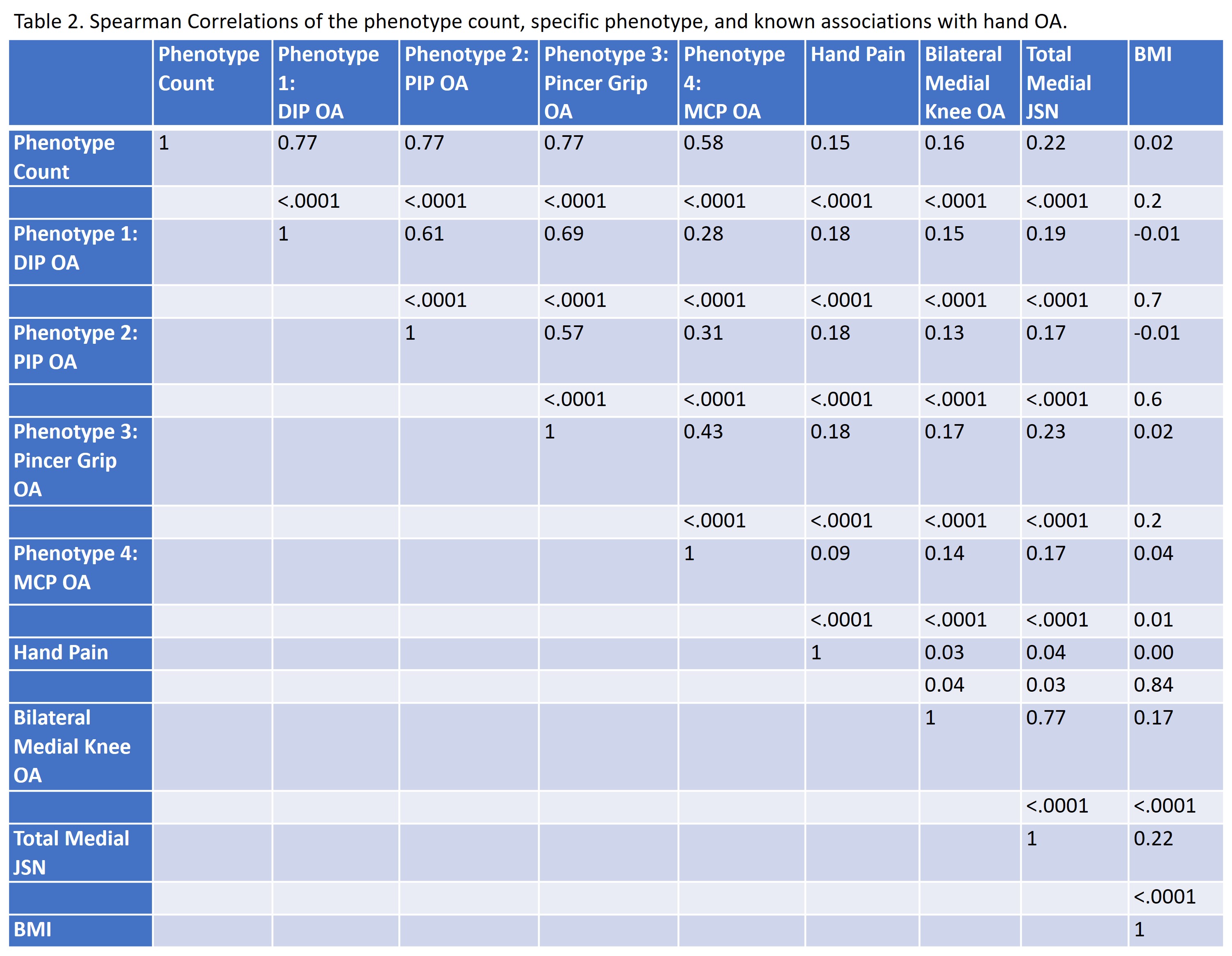Session Information
Session Type: Poster Session C
Session Time: 10:30AM-12:30PM
Background/Purpose: Determination of osteoarthritis (OA) phenotypes provides a deeper understanding of the nature of the disease and progress towards precision- based intervention. Hand OA is particularly challenging because many joints must be considered. Prior investigations have defined patterns of joint involvement based on clinical or anatomical considerations (e.g., distal interphalangeal [DIP] OA, thumb-based OA). Other hand OA phenotypes may be clinically relevant but are ignored because they fail to conform to our preconceptions. We propose a data-driven approach to better understanding patterns of joint involvement in hand OA.
Methods: We drew participants from the Osteoarthritis Initiative (OAI). Using baseline hand radiographs, one reader performed assessments of Kellgren and Lawrence (KL) grade and joint space narrowing (JSN) on distal interphalangeal (DIP) joints 2-5, proximal interphalangeal (PIP) joints 2-5, interphalangeal joint (IP), metacarpophalangeal (MCP) 1-5, carpometacarpal (CMC) 1, and the scaphotrapezium (ST) joints. We performed a factor analysis of these joints for KL grade, using Varimax (orthogonal rotation), and included factors with positive eigenvalues. Initially items with loadings greater than 0.5 were considered; depending on how they grouped, items with minimum loading of 0.3 were permitted. Factor loadings were used to interpret and qualitatively describe hand OA phenotypes. We postulated the underlying factors for four phenotypes. Primary analyses were repeated using JSN and stratified by biological sex.
We created a scoring scheme for the phenotypes based on the weighted sum of the KL grades of included joints. A phenotype count (0 to 4) was also used, allowing one point per phenotype (at least one joint with KL≥1). With phenotype scores and count, we ran Spearman Correlations with hand pain and knee OA (presence of bilateral medial OA, total medial JSN score) to evaluate construct validity of the phenotypes.
Results: We included 3606 participants.
Four phenotypes were identified: factor one represented DIP OA, factor two corresponded with PIP OA, factor three was pincher grip OA, and factor four reflected MCP OA. Secondary analyses were similar when evaluating JSN and gender-specific analyses. Five common combinations of the 4 phenotypes: 1) DIP, PIP, and Pincer Grip OA (28%); 2) DIP and Pincer Grip OA (15%); 3) All four phenotypes (13%); 4) no OA (13%); and 5) Pincer Group alone (11%).
Conclusion: Using a data-driven approach, four hand OA phenotypes have emerged, two that confirm well established phenotypes (DIP and PIP OA), two that are novel. Pincer grip OA is a new phenotype that broadens our understanding of what has previously been described as thumb based OA. Instead of just including thumb joints, it also includes joints of the 2nd and 3rd ray which are important in pincer gripping. Additionally, though OA has been previously reported in the MCPs, this is the first report that the row of MCP OA behaves as a phenotype. Construct validity of these four phenotypes is strengthened by their consistent associations with knee OA and hand pain. These findings support that the pincer grip OA and MCP OA are credible phenotypes of hand OA.
To cite this abstract in AMA style:
Lo G, Driban J, Eaton C, Roberts M, Schaefer L, Smith S, Haugen I, Cauley J, Rathbun A, Meara A, Hochberg M, Kwoh K, Rubin S, McAlindon T. Pincer Grip and Metacarpophalangeal Patterns Emerge as New Phenotypes of Hand Osteoarthritis Using a Data Driven Approach: Data from the Osteoarthritis Initiative [abstract]. Arthritis Rheumatol. 2024; 76 (suppl 9). https://acrabstracts.org/abstract/pincer-grip-and-metacarpophalangeal-patterns-emerge-as-new-phenotypes-of-hand-osteoarthritis-using-a-data-driven-approach-data-from-the-osteoarthritis-initiative/. Accessed .« Back to ACR Convergence 2024
ACR Meeting Abstracts - https://acrabstracts.org/abstract/pincer-grip-and-metacarpophalangeal-patterns-emerge-as-new-phenotypes-of-hand-osteoarthritis-using-a-data-driven-approach-data-from-the-osteoarthritis-initiative/



